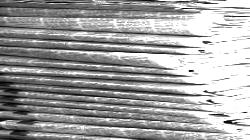Want Publicity? Create Your Own Newsworthy Research
by Marcia Yudkin
Take a close look at the front section of specialized magazines, and you'll often find little articles highlighting results of some study or poll conducted by some private company or other. Research data is also often cited by general-interest publications like
USA Today and network newscasts. You don't need a Fortune 500-sized budget to undertake a newsworthy study, or to receive coverage for it, either to your industry or the general public.
The scope and rigor of a study or poll are usually not the criteria governing whether or not it's considered worthy of attention. Rather, reporters and editors judge the newsworthiness of research according to its pertinence for their audience, its novelty and its surprise quotient. If the study results seem likely to provoke a "Wow!" or "Interesting!" in the audience, then they have a good shot at earning media coverage.
Working backward, then, to how you would design a research question or poll with a promising potential for ink and air time, here are some guidelines.
-
The answer to the question is not obvious and not already known.
-
Those interviewed would want to know how others answered the question.
-
It pertains to a topic that is either perennially or currently of interest to a particular audience or the general public.
-
It's probably a qualitative question rather than answerable with "yes" or "no."
-
The answers will subtly promote you, the sponsor of the research, without seeming overly self-serving.
|
Improve Your Odds for Media Coverage
Discover how to generate dozens of ideas that reporters, broadcasters - and your prospective customers - love. Inject dynamism, relevance
and surprise into your media pitches.
Learn how to distill your message so it captures attention right away, then bolster your credibility and eliminate factors that turn off editors and producers.
Publicity
mastery course. |

Publicity mastery course |
|
For instance, if you're a moving company, asking "What quality would you rank as #1 in importance when you're looking for a moving company?" would not be as compelling as "When you're moving, what household item are you most concerned about getting lost or damaged?"
If you're a chain of Italian restaurants, a good question would be "Which Italian dish gives you the greatest feeling of nostalgia?" A management consultant might profitably ask executives, "What mistakes do you see your vendors making in today's down economy?"
As for how many people you need to query for your study, it might be less than you think. One hundred, give or take a few, may be perceived as plenty, especially if the population you are asking is a relatively exclusive one. When Internet stocks were booming, a newsletter publisher got featured on CNN and CNBC with his findings about how little stockbrokers knew about the Net. He interviewed 103 brokers for his study. Usability guru Jakob Nielsen got wide coverage for a study of 20 journalists' inability to find company information at corporate Web sites.
When you have your questionnaire or interview results, spend the effort necessary to make your data sound catchy. The newsletter publisher headlined his press release, "Want Advice on Which Internet Stocks to Invest In? 'You're Better Off Asking Your Teenager Than Your Broker,' says MBA Professor's Survey." Jakob Nielsen announced his findings equally effectively with the attention-getting headline, "Corporate Websites Get a 'D' in PR."
Copyright 2003 Marcia Yudkin.
All rights reserved.
Online Courses Related to Publicity
The Press Release Makeover Course
Deep Publicity
Marketing for Introverts
Create a Practical Marketing and Publicity Plan |






